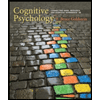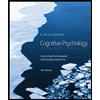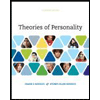Quiz: Mirrors Lie
Due
Dec 3 at 11:59pm
Points
75
Questions
30
Time Limit
90 Minutes
Instructions
Attempt History
Attempt
Time
Score
LATEST
Attempt 1
45 minutes
75 out of 75
Correct answers are hidden.
Score for this quiz: 75
out of 75
Submitted Nov 26 at 8:19pm
This attempt took 45 minutes.
The quiz:
Covers the Learn
material from
Module 6: Week 6.
Contains
30 multiple-choice and true/false questions.
Is
limited to 90 minutes.
Allows 1 attempt
.
Is
worth 75 points
.
Submit this assignment by 11:59 p.m. (ET) on Sunday of Module 6: Week 6.
2.5 / 2.5 pts
Question 1
Which key support group is encouraged to be involved in managing eating disorder
symptoms in an adolescent population? (Treasure et al.)
Teachers Classmates Friends Family 2.5 / 2.5 pts
Question 2
In adults, which sub-population has a higher-than-average risk for binge spectrum
disorders? (Treasure et al.)
Females Ethnic minorities Lower weight individuals College graduates 2.5 / 2.5 pts
Question 3
Which percent of adults with bulimia nervosa fail to abstain from core symptoms even
after receiving the best available treatments? (Treasure et al.)
9% 20% 32% 56% 60% 2.5 / 2.5 pts
Question 4
What percent of people with eating disorders have psychiatric comorbidities? (Treasure
et al.)
Less than 10% 35% 50% Greater than 70% 2.5 / 2.5 pts
Question 5
Which of the following are classiYed as eating disorders in the Diagnostic and Statistical
Manual (DSM-5)? (Treasure et al.)
Anorexia nervosa Bulimia nervosa Binge-eating disorder Avoidant-restrictive food intake disorder All of the above 2.5 / 2.5 pts
Question 6
People with diabetes have an increased prevalence of eating disorders. (Treasure et al.)
True False 2.5 / 2.5 pts
Question 7
Which of the following examples represents Yrst-line outpatient treatment of adults with
anorexia nervosa? (Treasure et al.)
Cognitive behavioral therapy Maudsley Model Focal psychodynamic psychotherapy Specialist Supportive Clinical Management All of the above 2.5 / 2.5 pts
Question 8
What is the median illness duration for patients with anorexia nervosa? (Treasure et al.)
2 years 5 years 6 years 8 years 10 years 2.5 / 2.5 pts
Question 9
Which eating disorder is characterized by eating non-nutritive food substances for a
period of a month or more? (Treasure et al.)
Anorexia nervosa Bulimia nervosa Binge eating disorder Avoidant-restrictive food intake disorder Pica 2.5 / 2.5 pts
Question 10
Medical complications of anorexia nervosa affect (Treasure et al.)
Only the gastrointestinal tract Only the stomach and liver Some organs and systems of the body All organs and systems of the body 2.5 / 2.5 pts
Question 11
In addition to the United States, which two countries contribute the most to the global
burden of eating disorders, particularly in women aged 15-49? (Hoek)
Japan and Polynesia China and India Denmark and Australia Canada and France Turkey and China 2.5 / 2.5 pts
Question 12
Which socio-cultural aspect has been protective against eating disorders in the Latin
American population compared to other Western countries? (Hoek)
High emphasis on diet High emphasis on physical activity Body ideal favoring a curvaceous shape Lower average BMI 2.5 / 2.5 pts
Question 13
Body image disturbance predicts both onset and maintenance of eating disorders.
(Kearney-Cooke and Tieger)
True False 2.5 / 2.5 pts
Question 14
It is important to distinguish body image disturbance from simply disliking or being
dissatisYed with one’s body, since body dissatisfaction is only one aspect of the
attitudinal component of body image disturbance. (Kearney-Cooke and Tieger)
True False 2.5 / 2.5 pts
Question 15
Which of the following sociocultural factors affect body image? (Kearney-Cooke and
Tieger)
GloriYcation of slenderness by mass media Stigmatization of body fat and obesity Cultural teaching that control and self-conYdence is gained through weight reduction All of the above 2.5 / 2.5 pts
Question 16
What is the most frequent comorbidity of binge-eating disorder? (Kearney-Cooke and
Tieger)
Diabetes Depression Obesity Dyslipidemia 2.5 / 2.5 pts
Question 17
Which main component of body image is comprised of self-evaluation of the body and
the incuence of the body’s appearance in self-esteem? (Kearney-Cooke and Tieger)
Cognitive-affective Perceptual Behavioral Physical 2.5 / 2.5 pts
Question 18
Which component of body image includes body checking (deYned as frequently looking
in the mirror, asking for reassurance from others, and pinching or measuring one’s body
parts)? (Kearney-Cooke and Tieger)
Cognitive-affective Perceptual Behavioral Physical 2.5 / 2.5 pts
Question 19
The Bydlowski study (2005) found that individuals with eating disorders had no
difference in emotional processing compared to the control group. (Kearney-Cooke and
Tieger)
True False 2.5 / 2.5 pts
Question 20
Which of the following was an outcome of the Bhatnagar 2010 study involving cognitive-
behavioral intervention as an approach to improve body image? (Kearney-Cooke and
Tieger)
Lower satisfaction with appearance More investment in appearance No change in discrepancy between actual and ideal appearance No change in body avoidance behaviors Decreased levels of disordered eating and symptoms of depression 2.5 / 2.5 pts
Question 21
What is a likely cause of the increase in incidence rates of anorexia for adolescent
females in the Netherlands and United States? (Keel and Forney)
Improved classiYcation of symptoms Better reporting methods Earlier detection and earlier age of onset SigniYcant shifts in cultural standards of thinness 2.5 / 2.5 pts
Question 22
The most common eating disorder diagnosis in epidemiological studies is (Keel and
Forney)
Anorexia nervosa Bulimia nervosa Binge eating disorder Eating disorder not otherwise speciYed 2.5 / 2.5 pts
Question 23
Between 1994 and 2000, incidence of anorexia in the United Kingdom (Keel and Forney)
Increased Decreased Remained stable 2.5 / 2.5 pts
Question 24
Criteria for diagnosing anorexia and bulimia nervosa varies between the DSM-5 and
DSM-IV-TR guidelines. (Keel and Forney)
True False 2.5 / 2.5 pts
Question 25
According to the American Psychiatric Association, prevalence of eating disorders in
Western cultures differs by _____. (Keel and Forney)
Age Ethnic group Gender Socioeconomic status 2.5 / 2.5 pts
Question 26
During the Yrst decade of 2000, Japan experienced a ______ rise in rates of anorexia
nervosa. (Pike et al.)
2-fold 3-fold 4-fold 5-fold 2.5 / 2.5 pts
Question 27
What was the unintended consequence of the school-based childhood obesity program
“Trim and Fit” that was launched in Singapore in the 1990s? (Pike et al.)
Decreased BMI of school-aged children Increased risk of eating disorders Reduced social stigma and teasing Increase in structured physical activities 2.5 / 2.5 pts
Question 28
Studies on the effects of industrialization and Westernization in Fiji in the late 1990s
observed which of the following? (Pike et al.)
Increased body dissatisfaction Increased dieting Increase in disordered eating behaviors All of the above 2.5 / 2.5 pts
Question 29
In which country did reports of eating disorders begin to surface in the 1970s? (Pike et
al.)
China Indonesia Japan India 2.5 / 2.5 pts
Question 30
How has Western incuence in Asia shifted gender roles and redeYned beauty standards
in a way that contributes to increasing eating disorders? (Pike et al.)
Industrialization enabled more women to enter the workforce and be exposed to Western
cosmetic imports
Western incuence promoted “body instrumentality” More Asian women became the manufacturers of clothing, beauty, and luxury goods All of the above Quiz Score: 75
out of 75
PREVIOUS
NEXT






 Ciccarelli: Psychology_5 (5th Edition)PsychologyISBN:9780134477961Author:Saundra K. Ciccarelli, J. Noland WhitePublisher:PEARSON
Ciccarelli: Psychology_5 (5th Edition)PsychologyISBN:9780134477961Author:Saundra K. Ciccarelli, J. Noland WhitePublisher:PEARSON Cognitive PsychologyPsychologyISBN:9781337408271Author:Goldstein, E. Bruce.Publisher:Cengage Learning,
Cognitive PsychologyPsychologyISBN:9781337408271Author:Goldstein, E. Bruce.Publisher:Cengage Learning, Introduction to Psychology: Gateways to Mind and ...PsychologyISBN:9781337565691Author:Dennis Coon, John O. Mitterer, Tanya S. MartiniPublisher:Cengage Learning
Introduction to Psychology: Gateways to Mind and ...PsychologyISBN:9781337565691Author:Dennis Coon, John O. Mitterer, Tanya S. MartiniPublisher:Cengage Learning Psychology in Your Life (Second Edition)PsychologyISBN:9780393265156Author:Sarah Grison, Michael GazzanigaPublisher:W. W. Norton & Company
Psychology in Your Life (Second Edition)PsychologyISBN:9780393265156Author:Sarah Grison, Michael GazzanigaPublisher:W. W. Norton & Company Cognitive Psychology: Connecting Mind, Research a...PsychologyISBN:9781285763880Author:E. Bruce GoldsteinPublisher:Cengage Learning
Cognitive Psychology: Connecting Mind, Research a...PsychologyISBN:9781285763880Author:E. Bruce GoldsteinPublisher:Cengage Learning Theories of Personality (MindTap Course List)PsychologyISBN:9781305652958Author:Duane P. Schultz, Sydney Ellen SchultzPublisher:Cengage Learning
Theories of Personality (MindTap Course List)PsychologyISBN:9781305652958Author:Duane P. Schultz, Sydney Ellen SchultzPublisher:Cengage Learning




